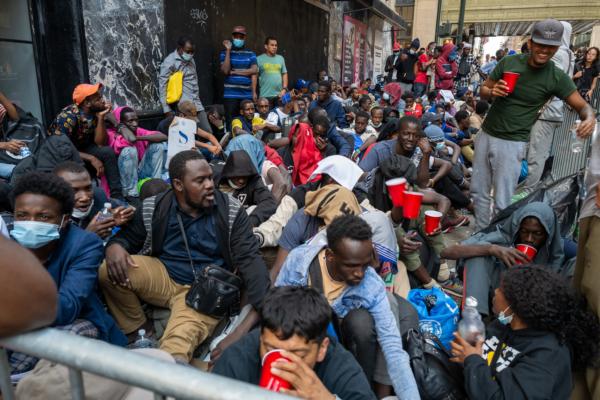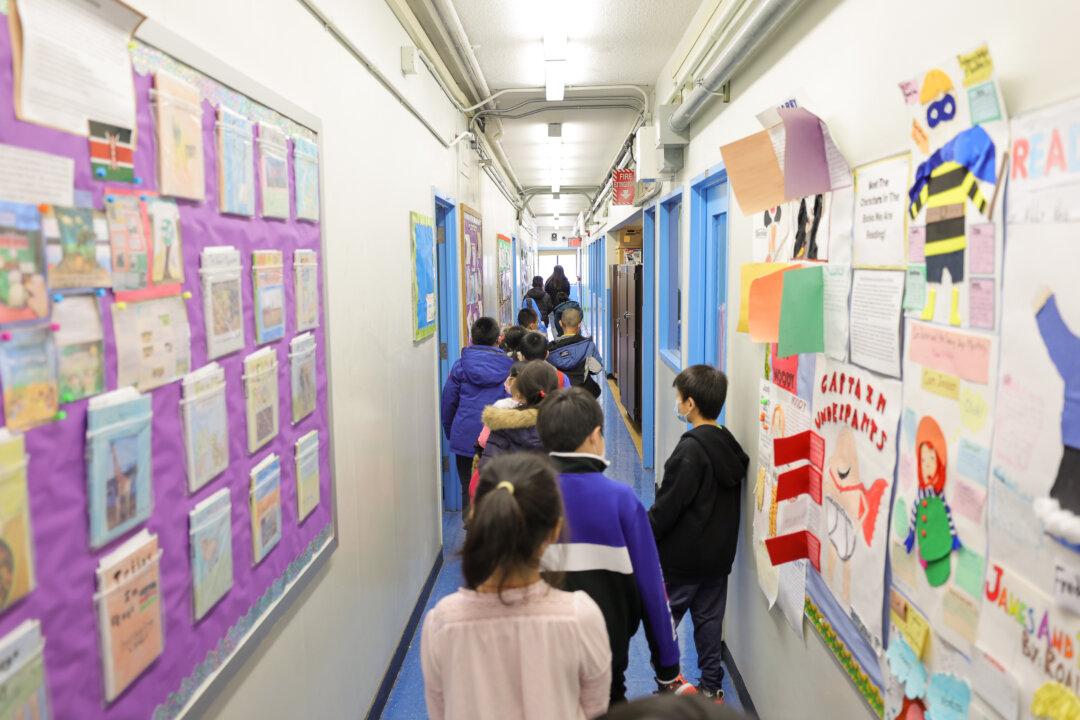For the first time in four years, New York City schools with enrollments that fall below projected numbers will have their budgets slashed come November.
Once the enrolment audits on Oct. 31 are complete, schools that fall short of projected enrolment will have to repay the New York City Department of Education DOE, while those that surpass expectations will receive increased funding.
The bleak prospect has been anticipated due to the city’s challenging financial circumstances with the increased costs from the immigration crisis and diminishing federal COVID-19 relief funds.
Dozens of recently arrived illegal immigrants camp outside of New York's Roosevelt Hotel, which has been made into a reception center, as they try to secure temporary housing in New York City on Aug. 1, 2023. Spencer Platt/Getty Images




